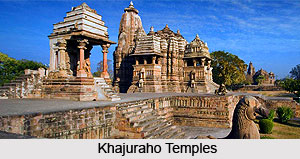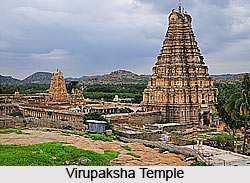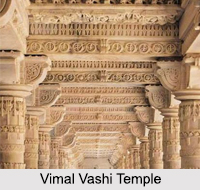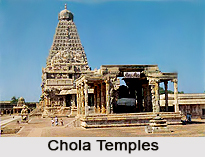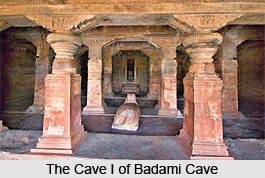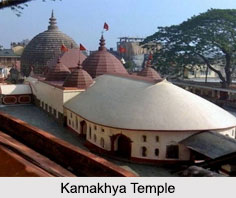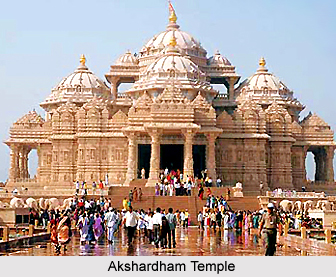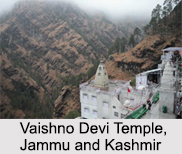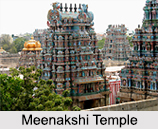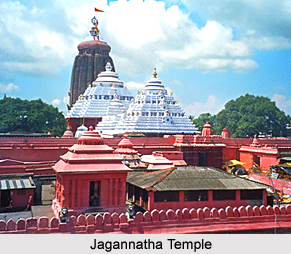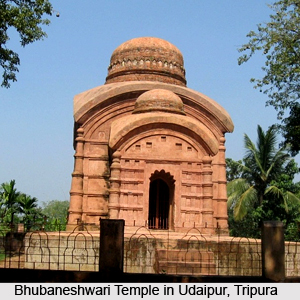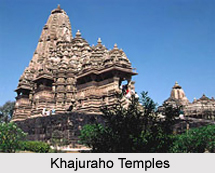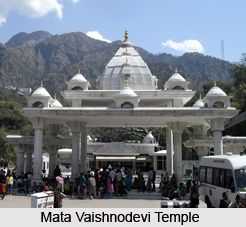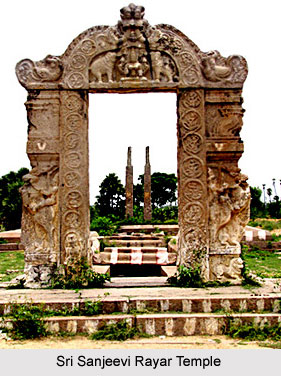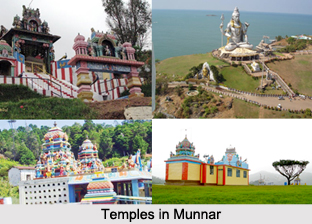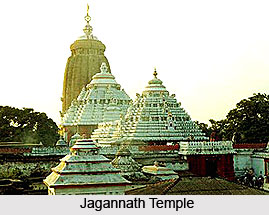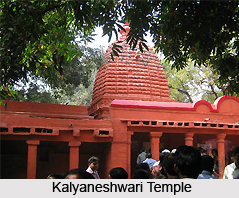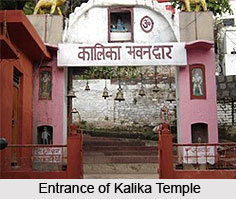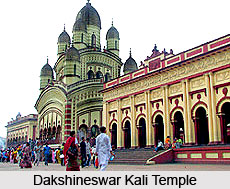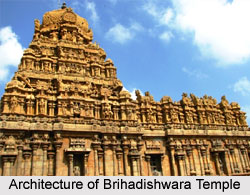The Mukut Mukharvind temple is situated on the border of the Manasi Ganga. The Manasi Ganga is a large pond within Govardhan town, which is said to form the `mouth` of the Govardhan hill itself or to say more precisely its southern half, where the myth seems to have root. The pond is situated in the middle of the rocky ridge between its northern and its southern part.
The Manasi Ganga pond on which Mukut Mukharvind temple is situated is said to be named after Manasa, a powerful snake goddess, supposed to be the daughter of god Shiva and the river goddess Ganga. The shrine of Mukut Mukharvind temple is a rather small and unimpressive shrine, which is secluded from the town in the rainy season and early autumn, when the pilgrims need to wade through mud and knee deep water to reach it.
The Mukut Mukharvind temple shrine itself is said to be the property of the Govardhan Pandas, who claim themselves as `Sanadhya Brahmins` though their Brahmin hood is doubtful. They claim to be the oldest dwellers of the town and the descendants of the famous Saddupande, who was responsible for the discovery of the `Sacred Arm` of Shri Nathji.
The Mukut Mukharvind shrine remains open to all people. There are various rocks seen here, which include two Govardhan rocks, emerging from the pond itself, a low rock, showing a round depression in the middle and a geomorphic cow-hoof imprint above it. Other rock found here is a high standing rock showing on its smooth face a larger geomorphic impression, which suggests the elongated shape of a snake. The low rock found here is identified as the `mukharvind`, i.e. the `sun-mouth` or `lotus-mouth` of Lord Govardhan. The high standing rock is believed to be the `mukut` i.e. the `crown` or the `canopy` of the Mukharvind rock.
At the Mukut Mukharvind shrine, more emphasis is given on the divine mouth of the Lord. It is said that this very mouth used to swallow all the offerings brought by the Gopa tribals in olden times. These tribals are the same tribal cowherd population which even now predominates around the Manasi Ganga. The Manasi Ganga is depicted as `an ocean of milk`, milk being the favourite food of Krishna-Gopal and of all naga deities as well.
Every year, the pilgrims from all over Braj come to the Manasi Ganga and the Mukut Mukharvind shrine to pour milk into the sacred mouth before starting on the annual parikrama. This shrine stands at both the starting and the concluding point of the great autumn pilgrimage.
According to a popular Brajavasi belief, Govardhan, the divine hill stands at the centre of the holy Braj country and the two Govardhan stones in the Mukut Mukharvind shrine stand as its epicenter. The Govardhan hill here is considered to be the highest point on earth, the original stones are its centre and the hole within the Mukharvind lower stone is the `navel` connecting the visible earth with the underworld (patala), which is the subterranean world of the nagas.
